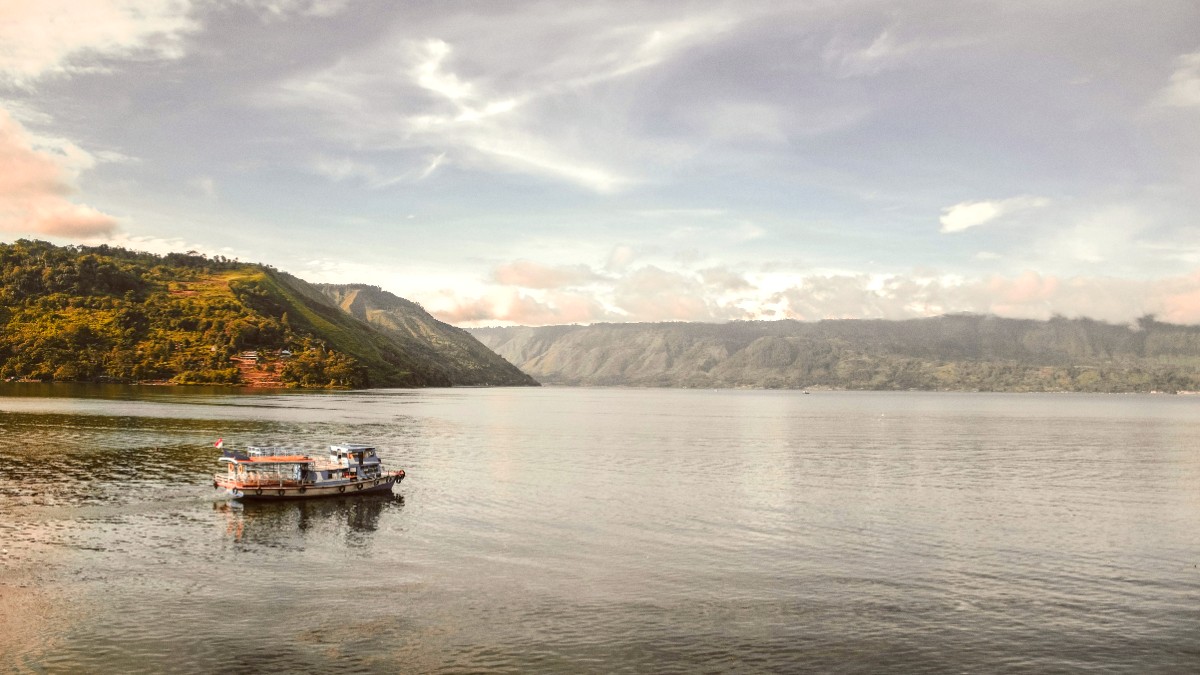
Sumatra, Indonesia
Lake Toba sits in the northern part of Sumatra, Indonesia's largest island. This geographical feature is not just a lake; it is a colossal caldera, a basin formed when a massive volcano collapses after an eruption. Scientists estimate the eruption occurred roughly 74,000 years ago, creating one of Earth's most significant geological events. The lake itself measures approximately 100 kilometers long and 30 kilometers wide, reaching depths of over 500 meters in some areas. This makes it the largest volcanic lake globally and one of the deepest.
Lake Toba is a deep geological and human history. Its formation, the supervolcanic eruption approximately 74,000 years ago, was one of Earth’s largest known eruptions. This event caused a global volcanic winter, profoundly changing climate and potentially contributing to a human population bottleneck. The sheer force of this eruption shaped the landscape, forming the massive caldera that now holds the lake and Samosir Island, which is essentially a resurgent dome within the caldera. This geological past makes Lake Toba a site of global scientific interest, a monument to Earth's dynamic forces.
Samosir Island is the heartland of the Batak Toba people, one of the six main Batak sub-groups. Their distinct culture, traditions, and language evolved over centuries in this unique environment. Archaeological evidence places human settlement in the area back thousands of years. Early Batak societies organized into clans, and their history includes periods of animist beliefs, often incorporating reverence for nature and ancestral spirits.
At the center of this immense body of water lies Samosir Island, an island almost the size of Singapore. Samosir is not a true island in the typical sense; it is a peninsula connected to the mainland by a narrow land bridge on its western side, a detail often surprising to first-time visitors. The island rises majestically from the lake's depths, its interior featuring rolling hills and smaller crater lakes. This elevation brings relief from the tropical heat, offering fresh air and comfortable temperatures, especially in the evenings.
Surrounding the lake, the landscape consists of steep crater walls, agricultural terraces, and scattered forests, providing a dramatic backdrop to the serene waters. The geology of the area also yields mineral-rich soil, supporting diverse plant life and the distinct local agriculture. Visitors mainly access the lake via the mainland town of Parapat, a small but busy ferry port. From Parapat, ferries transport people and vehicles across the lake to various points on Samosir Island, most notably to Tuk Tuk, the island’s main tourist hub.
European contact began in the 19th century, with Dutch colonialists and Christian missionaries arriving. Batak people gradually adopted Christianity, now the dominant religion, though traditional animist beliefs and customs survive, intertwined with their Christian faith.
Traditional Batak houses, with distinctive boat-shaped roofs, directly link to ancestral past and clan structures. These embody family lineage and cultural identity.
History of conflict and isolation helped preserve unique Batak culture. Difficult terrain and vast lake once made access challenging, allowing Batak people to develop distinct traditions, including their own script (Surat Batak) and sophisticated social structures.
Sites like King Sidabutar's Tomb in Tomok and the Stone Chairs of King Siallagan in Ambarita are tangible reminders of ancient Batak kingdoms, judicial practices, and belief systems. These offer insights into pre-colonial social organization and legal systems.
In recent times, Lake Toba became a popular destination, attracting backpackers then wider travelers. Tourism brought economic opportunities but also new challenges in balancing modernization with cultural preservation.
The journey across the lake itself presents an initial appreciation for the sheer scale and tranquility of this natural wonder. The surrounding region, including the Karo Highlands to the north, features other distinguished natural attractions, like towering waterfalls and active volcanoes, though these lie a short distance from Lake Toba itself. This unique geographical setting shapes both the climate and the cultural identity of the area, making it a compelling destination for those seeking both natural beauty and cultural immersion.
Type of Destination: Volcanic lake, cultural heartland of the Batak people, island retreat.
Climate: Tropical highland. Consistent warm temperatures (20-30°C / 68-86°F). Cooler evenings due to altitude. Dry (May-September) and wet (October-April) seasons.
Pace of Travel: Relaxed and slow. Lake Toba encourages a slower pace, ideal for those seeking tranquility and a break from fast-paced city life.
Local Culture: Predominantly Christian Batak Toba people. Rich traditions in music (Tor-Tor dance), weaving (Ulos cloth), and distinctive architecture (Rumah Adat). Very friendly and welcoming.
Currency: Indonesian Rupiah (IDR). Cash finds common use, especially outside of larger establishments. ATMs are available in Tuk Tuk and Pangururan. Language: Bahasa Indonesia (national language), Batak Toba (local language). English is commonly spoken in tourist areas on Samosir Island, especially Tuk Tuk. Transportation: Ferries connect Parapat on the mainland to Samosir Island. On Samosir, scooters serve as the main mode of transport for tourists. Private cars and shared minivans serve mainland travel. Accommodation: Ranges from budget-friendly guesthouses and homestays to mid-range hotels and a few higher-end resorts, mainly concentrated in Tuk Tuk. Many present lake views and direct lake access. Food: Batak cuisine is prominent, featuring pork (Babi Panggang Karo), fresh lake fish (Ikan Mas Arsik), and dishes with the unique andalliman pepper. Indonesian staples (Nasi Goreng, Mie Goreng) are widely available. Safety: A generally safe destination for tourists. Petty theft can happen but rarely. Health considerations include mosquito-borne illnesses and traveler's diarrhea. Drink Bottled water. Connectivity: Mobile phone coverage generally good in Tuk Tuk and along main roads. Wi-Fi available at most accommodations and restaurants. Local SIM cards are affordable and recommended for data.
IDR 300,000 - 500,000 (US$20-35) per person, per day.
IDR 500,000 - 1,000,000 (US$35-70) per person, per day.
IDR 1,000,000+ (US$70+) per person, per day.
Activities on Lake Toba